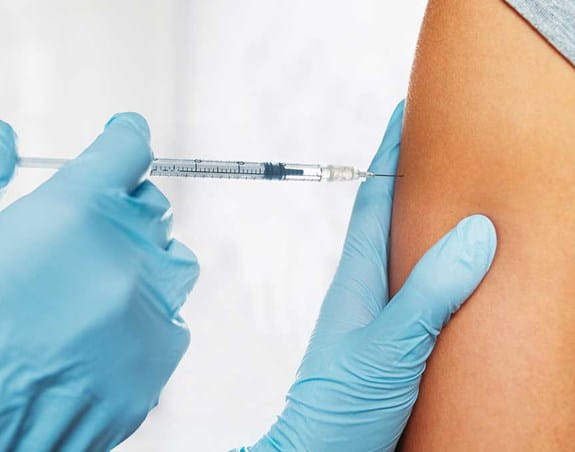Human papillomavirus
What do I need to know about HPV?
You may have heard about HPV – or the human papillomavirus. It’s mostly spread by having vaginal or anal sex with someone who has the virus. It also spreads through oral sex and through genital skin-to-skin touching during sex. A person with HPV can pass the infection to someone even when they have no signs or symptoms. And it’s very common. In fact, it’s more common than all other sexually transmitted infections combined.
HPV isn't spread through casual contact such as hugging, shaking hands, sneezing or coughing. It's also not spread through air, food or water.

What is HPV?
How do I know if I have HPV?
About 75% of sexually active people will get at least one HPV infection in their lifetime. Most of them will never know they’ve been infected because HPV often doesn’t cause any symptoms. This makes it hard to know exactly when or how the virus was spread.
Most HPV infections come and go over the course of a few years. While an HPV infection can’t be treated, the conditions it causes (such as genital warts) can.
For most people, the virus will go away in the same way as a common cold virus. HPV that doesn’t go away is what can lead to cancer.
HPV and cancer
A high-risk HPV infection can lead to changes in the cells of the cervix, which can develop into cervical cancer if the affected cells aren't found early (through a Pap test) and treated. Almost all cervical cancer cases are due to HPV.
In Canada, about two-thirds of HPV-related cancers happen in areas other than the cervix.
HPV infection is related to:
- 80% to 90% of anal cancers
- 40% of vaginal and vulvar cancers
- 40% to 50% of penile cancers
- 25% to 35% of mouth and throat cancers
Most of these cancers are related to high-risk HPV types 16 and 18.
Infection with high-risk HPV can cause cells to change or become abnormal. These changes can lead to cancer. HPV16 and HPV18 are the most common high-risk types and cause 70% of cervical cancers.
Infection with high-risk HPV is also linked to cancers of the penis, anus, vulva, vagina, and mouth and throat.
If you have a high-risk HPV infection that doesn't go away, precancerous cervical changes can develop. Regular cervical screening with a Pap test is important because it can find these changes. Precancerous cervical changes and cervical cancer can be treated.
Infection with low-risk HPV doesn’t cause precancerous changes and doesn’t increase your risk of cancer. But low-risk types of HPV can cause genital warts.
The 2 low-risk types of HPV that are responsible for 90% of genital warts are HPV6 and HPV11. Genital warts caused by low-risk types of HPV can appear weeks or months after skin-to-skin sexual contact with an infected person. There are treatments for genital warts. Talk to your healthcare professional to discuss your treatment options.
How can I prevent HPV?
Vaccines are available that can protect against the most common types of HPV that cause cancer. The Canadian Cancer Society recommends that people in Canada get vaccinated to reduce their risk of HPV-related cancer.
Get vaccinated or have your children vaccinated through school-based programs where available. If you aren't eligible for a free vaccination, talk to your doctor about which vaccine is right for you and when you should have it.
If you are sexually active, use a condom and other barriers safely to help protect against HPV.
Condoms or other barriers such as an oral dam can reduce HPV infection if put on before skin-to-skin sexual contact. However, areas not covered by these barriers still allow some skin-to-skin contact during sexual activity. Using these barriers will reduce – but not eliminate – the risk of HPV infection.
All about HPV vaccines
HPV vaccines do not treat HPV infections you already have or treat diseases or cancers related to HPV. They help protect against future HPV infection.
There are 2 types of vaccines to protect against HPV infection in Canada.
Who should be vaccinated for HPV?
HPV vaccination should be used along with, not instead of, cervical cancer screening for people with a cervix.
Where to get vaccinated for HPV
When should I be vaccinated?
HPV vaccines are given in either a 2- or 3-dose series and over a 6-month period, depending on your age and whether you are immunocompromised. The schedule of doses makes sure the vaccines are as effective as possible. If all doses of the vaccine aren’t given, or they aren’t given at the right time, you may not get the full benefit of the vaccine.
You should speak with your healthcare provider on the number of doses required for your unique circumstance.
The vaccines are most effective if given before a person becomes sexually active because the risk of infection will be lower. The vaccines are also more effective in young teens when their immune system is most responsive to the vaccine.

How safe are the vaccines?
How long do the vaccines last?
Get your child vaccinated against HPV
Can I be tested for HPV?
HPV tests check for high-risk types of HPV
These tests are usually used to identify people with a cervix who are at a higher risk of having precancerous changes and developing cervical cancer. Research shows that HPV testing is more accurate than the Pap test in finding precancerous changes in the cervix. Provinces and territories are moving towards implementing primary HPV testing as a part of cervical cancer screening. Given how effective Pap tests are in detecting cervical cancer and reducing cervical cancer death, Canadians should still participate in existing cervical cancer screening programs.
HPV tests are available in some areas of Canada. In provinces that use HPV tests as part of their cervical cancer screening programs, they may be used as the primary screening test or as a follow-up to abnormal Pap tests results.

Your trusted source for accurate cancer information
With support from readers like you, we can continue to provide the highest quality cancer information for over 100 types of cancer.
We’re here to ensure easy access to accurate cancer information for you and the millions of people who visit this website every year. But we can’t do it alone.
Every donation helps fund reliable cancer information, compassionate support services and the most promising research. Please give today because every contribution counts. Thank you.
